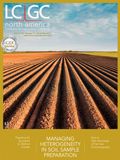Analysis of Next-Generation Protein Biopharmaceuticals
LCGC North America
Tips for effective use of chromatography and mass spectrometry for the analysis of antibody–drug conjugates, glycoengineered proteins, and biosimilars.
Biosimilars, antibody–drug conjugates (ADCs), and glycoengineered proteins can all be considered next-generation biopharmaceuticals.
ADCs consist of monoclonal antibodies (mAbs) covalently conjugated to cytotoxic drugs through either lysine or cysteine residues. They provide the benefits of large-molecule specificity with small-molecule toxicity, which has garnered particular oncological interest because they possess the ability to deliver the chemotherapeutic cytotoxic agent directly to the tumor site antigen. The antibody is used for targeted recognition and abundant target expression and internalization while the drug is highly potent and has a validated mechanism of action. The linker should be stable in plasma and labile upon internalization to release the drug.
To date, four ADCs have been released to the market. Gemtuzumab ozogamicin (Mylotarg, Pfizer/Wyeth) was the first ADC approved in 2001 for the treatment of acute myelogenous leukemia; however, it was withdrawn from the market in 2014 (although still marketed in Japan) and later re-released into the U.S. market in 2017. Brentuximab vedotin (Adcetris, Seattle Genetics and Millenial/Takeda) was approved in 2011 for Hodgkin lymphoma and ado-trastuzumab emtansine (Kadcyla, Roche/Genentech), was approved in 2013 for HER2-positive breast cancer.
Many critical quality attributes of mAbs have to be characterized for ADCs-including amino acid sequence, charge variants, post-translational modifications (PTMs), and so forth-as well as unique characteristics such as drug-to-antibody ratio (DAR), drug distribution, drug conjugation sites, and free drug properties (such as amount of free and bound cytotoxic agent, toxicity, and bioavailability; see Table I). Conjugation of a drug moiety introduces heterogeneity on top of that already present in the antibody, making all analyses more complex than for mAbs alone. The drugs and linkers tend to make the protein molecules more hydrophobic and prone to undesirable interactions as well as increasing their heterogeneity. Determining the potency of the ADC is very important and is linked to the number of drug molecules attached to the protein-too few will mean the drug is not effective, too many and the protein may not be absorbed; therefore, DAR is an important attribute of ADCs that must be characterized.

There are several approaches to determining DAR, one of which is hydrophobic interaction chromatography (HIC) (1). HIC is a milder form of reversed-phase high performance liquid chromatography (HPLC), hence it preserves the integrity of the ADC even in the absence of interchain disulfide bridges. The mobile phase consists of a salting-out agent, which at high concentration retains the protein by increasing hydrophobic interaction between the solute and the stationary phase; the retained proteins are eluted by decreasing the salt concentration. A typical HIC eluent consists of mobile-phase A: 2.0 M ammonium sulfate in 0.1 M sodium phosphate (monobasic), pH 7.0; mobile-phase B: 0.1 M sodium phosphate, pH 7.0. HIC is particularly applicable to the separation of ADCs since most cytotoxins are hydrophobic; the hydrophobicity of the ADC depends on the number of conjugated drugs, therefore ADCs with different DAR ratios can be separated using HIC.
ADCs that use the reduced interchain cysteine residues can be measured using native mass spectrometry (MS), and results have been found to be consistent between HIC and MS techniques (after removal of the drug). ADC DAR determination by liquid chromatography (LC)–MS is performed on glycosylated and deglycosylated ADCs in their intact and reduced forms. The resulting spectra can be deconvoluted and the DAR calculated-this calculation is often rapidly carried out using software that integrates all DAR peaks with minimal user input and reports final DAR values.
References
(1) D.W. Watson, LCGC North Am. 35(4), 278 (2017).

New Study Reviews Chromatography Methods for Flavonoid Analysis
April 21st 2025Flavonoids are widely used metabolites that carry out various functions in different industries, such as food and cosmetics. Detecting, separating, and quantifying them in fruit species can be a complicated process.

.png&w=3840&q=75)

.png&w=3840&q=75)



.png&w=3840&q=75)



.png&w=3840&q=75)











